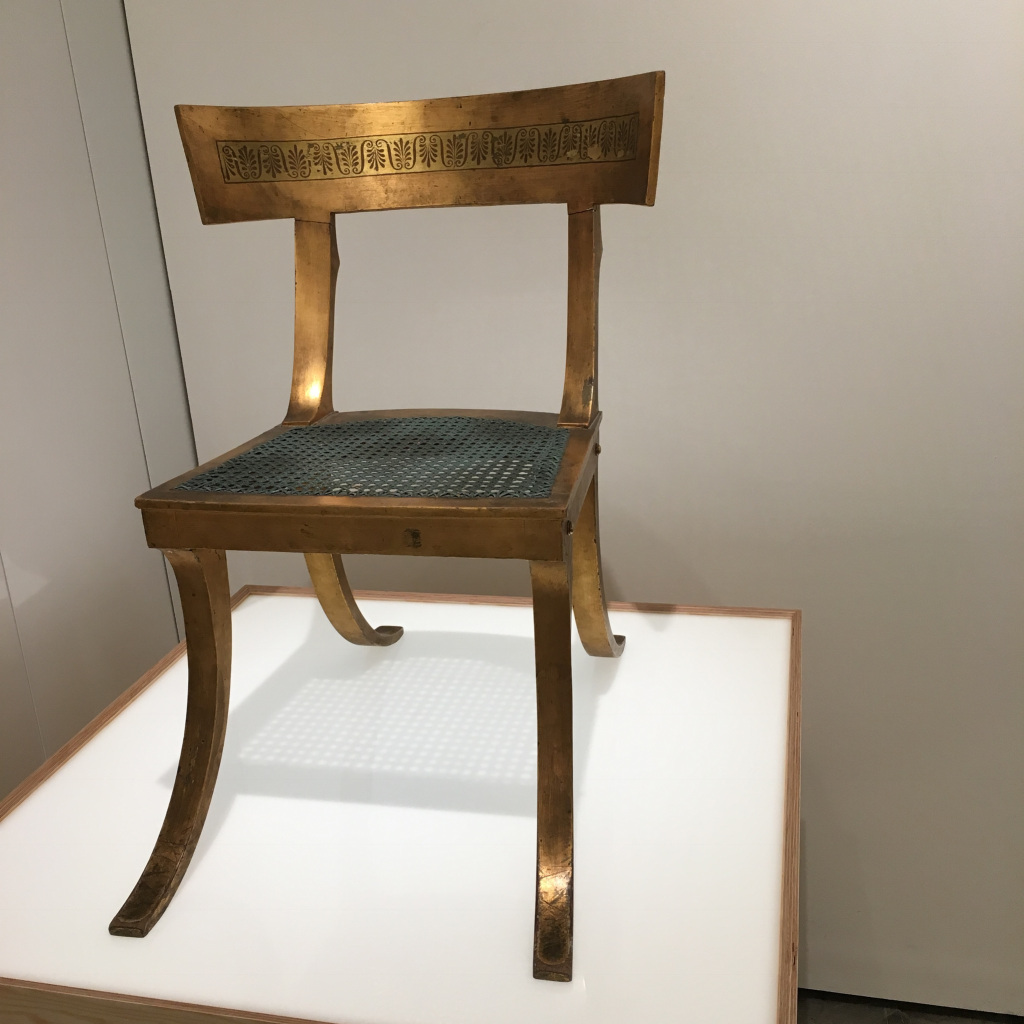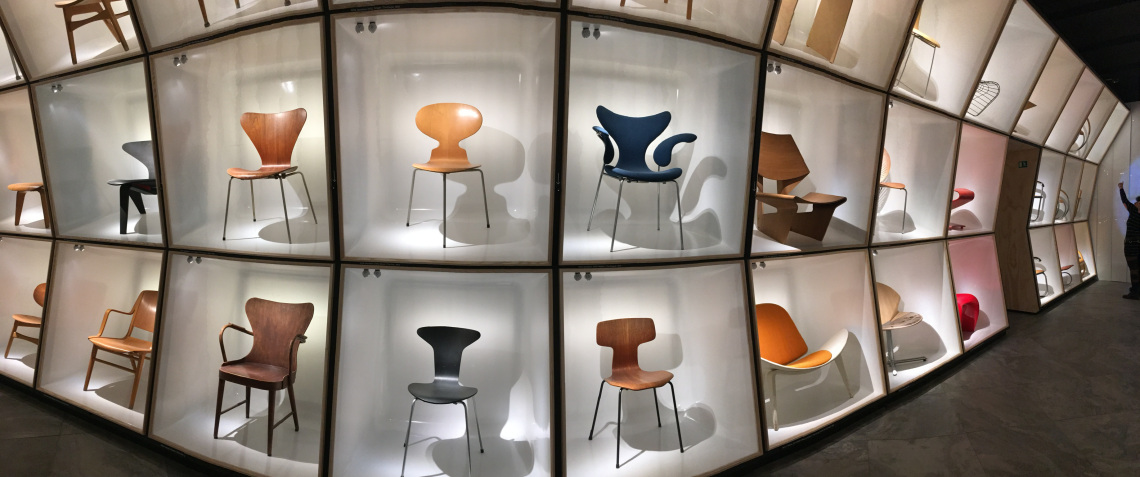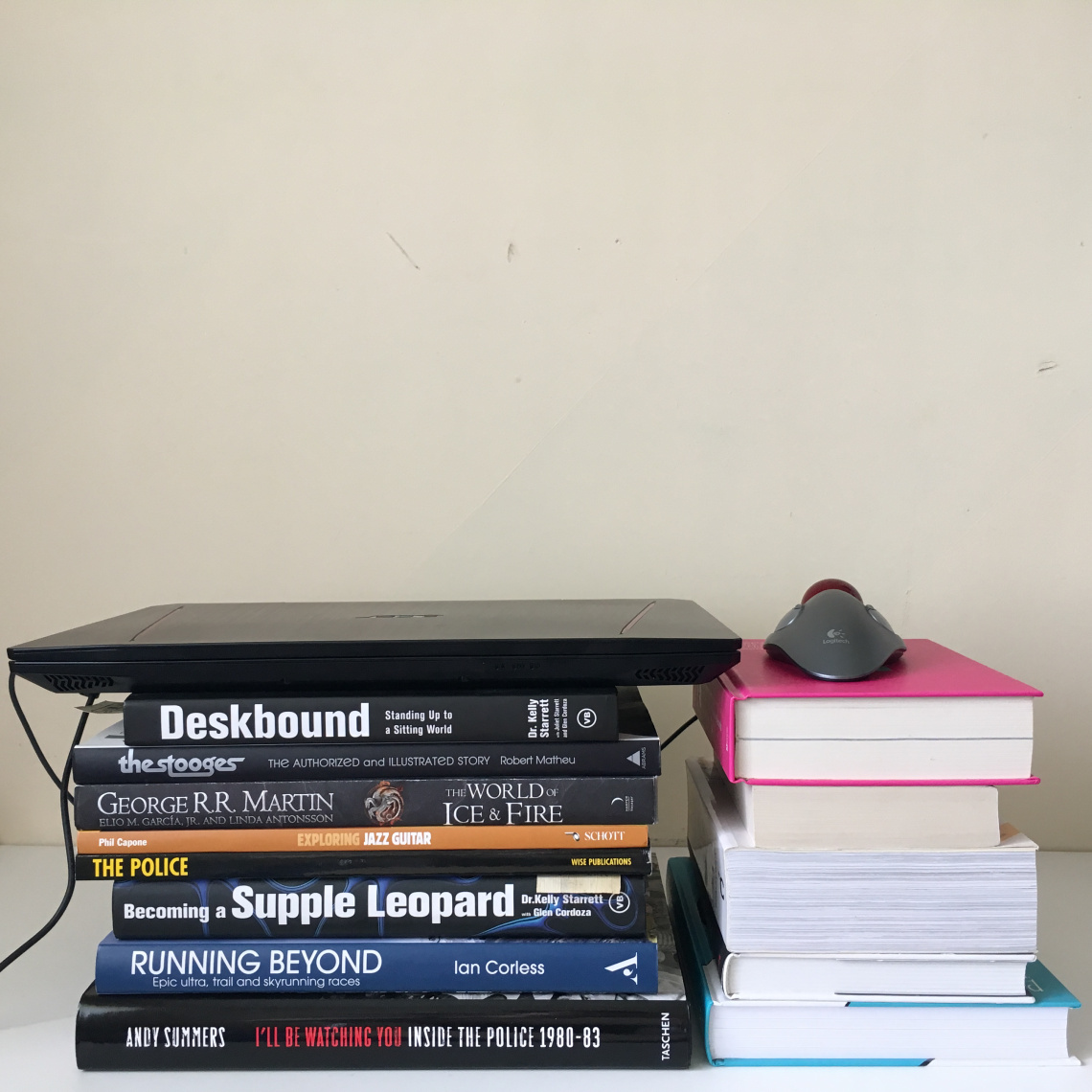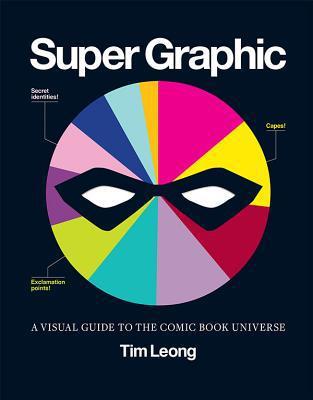As I recall fond memories of my formative years, the vast majority involve playing video games, often slumped in a chair in a stuffy room with stiff curtains that were rarely drawn. I’m not in the least bit embarrassed about this – on the contrary, I’ll gladly talk your ear off (if you’re fool enough not to change the subject) reminiscing about various Final Fantasies, my second life as a Dunmer spellsword in Morrowind and how Mario Kart DS is the pinnacle of the series.
 Danish Design Museum, Copenhagen. A little different to the chairs I slumped in as a youth.
Danish Design Museum, Copenhagen. A little different to the chairs I slumped in as a youth.
The common physical state that permeates all these nostalgic gaming memories is sitting. Since my pre-teen and teen and post-teen years where games were life, I’ve accumulated another passion – running – which is equally captivating to me in different ways.
Whereas teenage me was content to explore Fallout’s wastelands or wander the digital Yokosuka of Shenmue without stepping foot outdoors, the me of today gets restless without frequent bouts of movement and activity.
After a period of reflection, I’ve concluded that a recent desire to re-engage with video games is not simply a nostalgia-fuelled whim, but a genuine desire to enjoy the creative, exciting works that today’s game developers are producing. But I’ve decided that this will be on new terms: not sitting in a sun-starved room waiting for an achievement to unlock or a level to be attained, but standing up and experiencing the game on its own merits.
And when I say standing up, I mean that literally.
Part of my more recent reading on good health has led me to the work of Kelly Starrett, a CrossFit coach and physical therapist who advocates for healthy and efficient movement and mobility. Two of his books, Becoming a Supple Leopard and Deskbound, have been particularly influential for me in how to incorporate healthy habits into the daily grind.
The latter of those works espouses the importance of simply staying on your feet, particularly in a world where many of us have a 9-to-5 office job or multi-hour commutes. In short, the book proposes that sitting consistently for extended periods is akin to a new-age smoking in terms of negative health impacts; impacts which can’t be negated solely by the odd gym session or weekend run.
 The history of the chair was well-documented in this exhibit at the Danish Design Museum in Copenhagen. As well-crafted and aesthetically pleasing as chairs can be, I’m trying to spend less time sitting and more time standing.
The history of the chair was well-documented in this exhibit at the Danish Design Museum in Copenhagen. As well-crafted and aesthetically pleasing as chairs can be, I’m trying to spend less time sitting and more time standing.
I don’t have any formal education in biomechanics and haven’t read every cited source and study in regards to these claims, but I know that I feel better on days when I’m mostly active and on my feet. Comparing that to the sluggish lethargy that I’m more susceptible to on slow moving days, and there’s enough for me to believe there is some genuine benefit to what Starrett proposes.
It has inspired me to convert a corner of my small bedroom into a standing desk space. This grand ‘conversion’ is actually a modest stack (or two) of hardback books to align my laptop and mouse in a more natural position (monitor in eye-line without craning my neck and arms parallel to the floor), and an Ikea-bought barstool to lean against and shift positions to stave off fatigue.
I’m not gonna lie: despite being relatively fit, a frequent walker and not-long coming out of seven years employment that saw me on my feet a great deal, it has been a challenging adjustment.
Using the barstool as a leaning aid has been essential, and though I’ll take sitting breaks when required (particularly in the last week as I nurse a fatigued-and-slightly-tender left foot), noticeable progress has been made over the past month. Fatigue is not overwhelming me quite as quickly, and I’m more keyed in with my body mechanics in terms of engaging my hips and core muscles (something that is very difficult to do from a sitting position).
 My makeshift desk: it puts the laptop in a more natural position to use when standing.
My makeshift desk: it puts the laptop in a more natural position to use when standing.
When I think back to school days, and the hours spent slumping and sliding and shifting on those horrible plastic chairs, I recoil. I sincerely hope schools and classrooms of today are more aware of the impact sitting can have on one’s health and wellbeing, and that encouraging activity and movement becomes more commonplace. I don’t have any children (I can barely look after myself!) but would definitely be a vocal parent at council meetings, complaining and campaigning for more movement-friendly classrooms!
For the moment though, I’m content to make slow and steady progress with my makeshift standing desk space. When I start my new job in September, I’ll do what I can to stay active and mobile throughout the work day, and if the opportunity presents itself to operate in a standing space, even better.
As I get older I think more about the consequences my actions (and inactions) have in both the short- and long-term. My aim is to age gracefully, stay active and live without assistance. In standing up today, I hope I’ll be able to stand on my own two feet, pain-free, for every tomorrow that comes.
I would highly recommend reading Becoming a Supple Leopard and Deskbound if you are interested in movement, mobility and good practises for better health. Supple Leopard is aimed at active individuals, introducing mobilisation exercises to leverage maximum performance and perform self-maintenance on the body. Deskbound is focused specifically on practises and habits to help combat a modern lifestyle that sees us sitting down for long periods.
Advertisements Share this:




